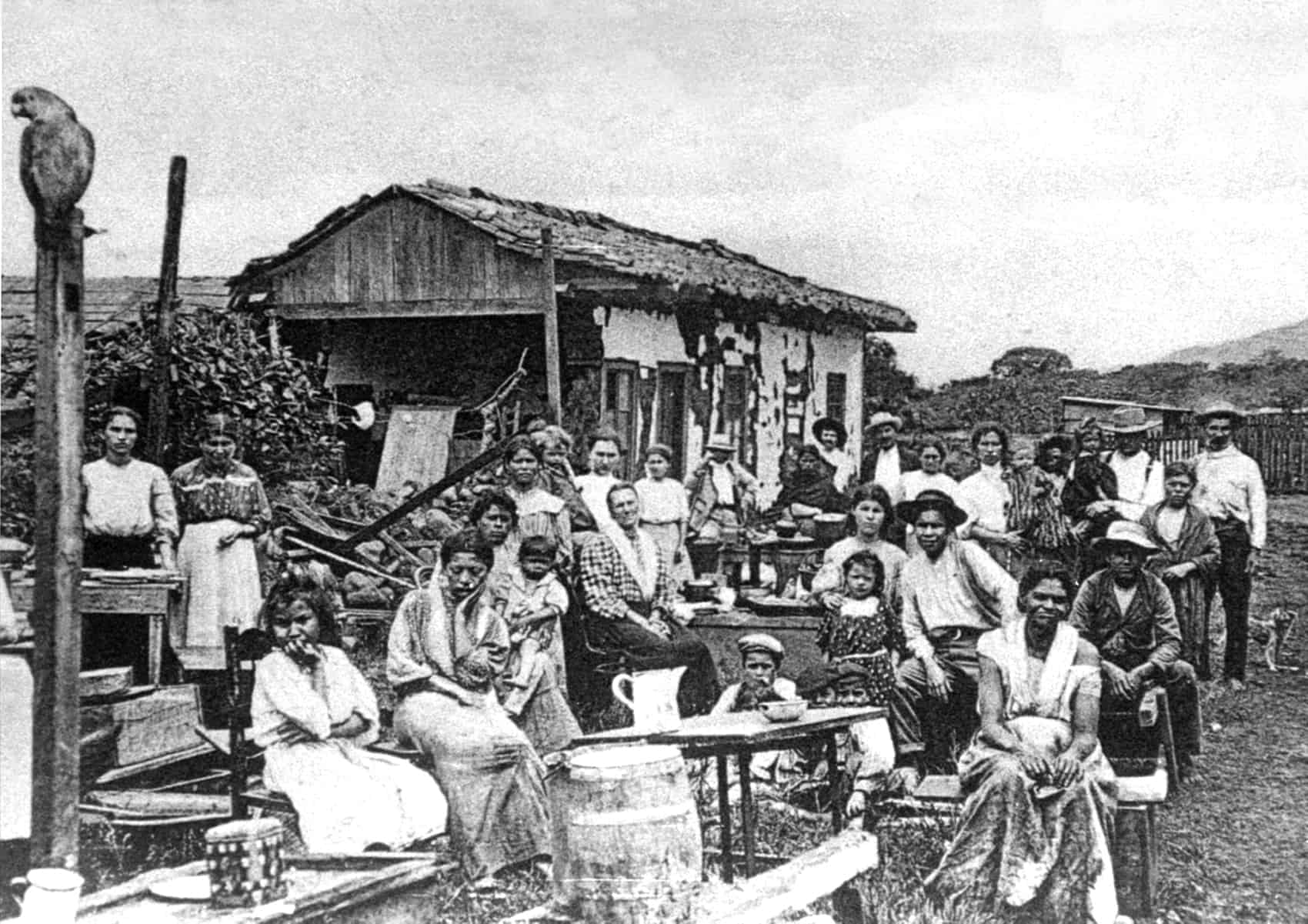Restaurant 1910 rose from the wreckage of Cartago. One hundred years have passed since an earthquake destroyed Costa Rica’s colonial capital. The Cartago restaurant pays respect to the tragic destruction of an entire city.
The restaurant’s exterior is constructed from wood and other materials salvaged from the aftermath. Inside, patrons can find more than one hundred photos showing the earthquake’s destruction. And if asked for a more descriptive history of the earthquake, Olga Marta Fernández, the restaurant’s owner, shows visitors an original copy of the 1910 gazette that details the destruction.
Fernández said that many of the restaurant’s customers marvel at the rows of black-and-white photos. To foreigners and Costa Ricans alike the restaurant is often a learning experience. “A lot of Ticos come in here and ask about the earthquake,” Fernández said. “They don’t know anything about it.”
The deadliest natural disaster in Costa Rica’s recorded history struck at 6:50 p.m. on May 4, 1910. Families were sitting down for dinner when the floors began to rumble. The 6.4 magnitude earthquake lasted 16 seconds, and was felt from Limón to Liberia. In Cartago the effect was catastrophic. The city was reduced to ruins and at least several hundred people were killed.
The city had recent damage by earthquakes in the weeks leading up to May 4, including one on April 13. When the big one finally hit, almost every public building – church, schools, courthouses, military barracks, the prison – collapsed. The city was wiped out. An estimated 700 people, or 10 percent of the city’s population died in the earthquake. However, with no official reckoning, some historians believe the number of dead might have surpassed 1000.
“The lesson that Costa Ricans must learn in this case – from the sadness,” said Franco Fernández, Olga Marta Fernández’s cousin, and a historian, “is that the country is very seismic, and we must prepare ourselves for such events. We have to organize to prevent this from happening again.”
This week’s 100th anniversary of the earthquake, served as a reminder of the disaster and a way to teach others about it. The Municipal Museum of Cartago, inaugurated just two weeks ago, opened an exhibition on May 4 entitled “And The Land Shook” to coincide with the centennial year of the disaster.
“The earthquake is a part of the people of Cartago and the city,” said Gabriela Villalobos, historian and exhibit curator. “It is something to be remembered.”
One of the most important symbols of the disaster can be found in the city center. “Las Ruinas” consist of a half-constructed church. The parish was never completed. Construction on it stopped after the earthquake, but the church was never torn down. The historic site remains in the plaza today.
Fernandez published the most famous work on the earthquake in the pictorial “Terremoto.” He said one of the biggest reasons the earthquake caused so much destruction was that many of the houses were made of adobe and bajarenque (wood wrapped with mud and reeds).
The cities of Paraíso and Orosi, and the Agua Caliente area were almost totally destroyed. In the aftermath, the Costa Rican military was sent to Cartago in an effort to clean up, rebuild the city and stop looters.
The University of Costa Rica’s geology department remembered the earthquake by giving several talks about natural disasters in Costa Rica and the lessons learned from Cartago. Mauricio Mora, a seismologist and volcanologist with the department, said one of the keys to preventing another Cartago is making Ticos realize what’s happened before.
“We have a real gap with new generations, who really don’t know about past events like 1910 earthquakes or the volcano activity of Irazú or Arenal in 1962 or ’68,” Mora said. “They don’t have a lot of historic memory about earthquakes, landslides, flooding and volcanoes.”
Mora also insisted that the government needs to become more involved with preparedness and making sure cities are suited to handle an earthquake.
Geologists blamed the earthquake on the Aguas Calientes fault. But a more intriguing aspect about the earthquake was that many in Cartago believed it was caused by a more supernatural force. On April 20, 1910, Halley’s comet made its return around the earth. According to Villalobos, Cartago citizens saw the celestial body as an omen of impending disaster.
Three weeks later, the prediction looked correct.
One hundred years later, technology has improved enough to predict earthquakes more accurately. Not that it makes preventing destruction any easier – especially if we fail to remember what the most enduring lesson about the earthquake might be that razed Cartago. In the words of Villalobos: “Nature is to be respected.”







